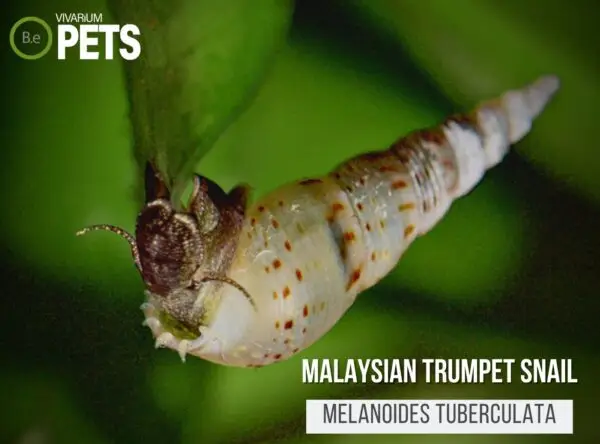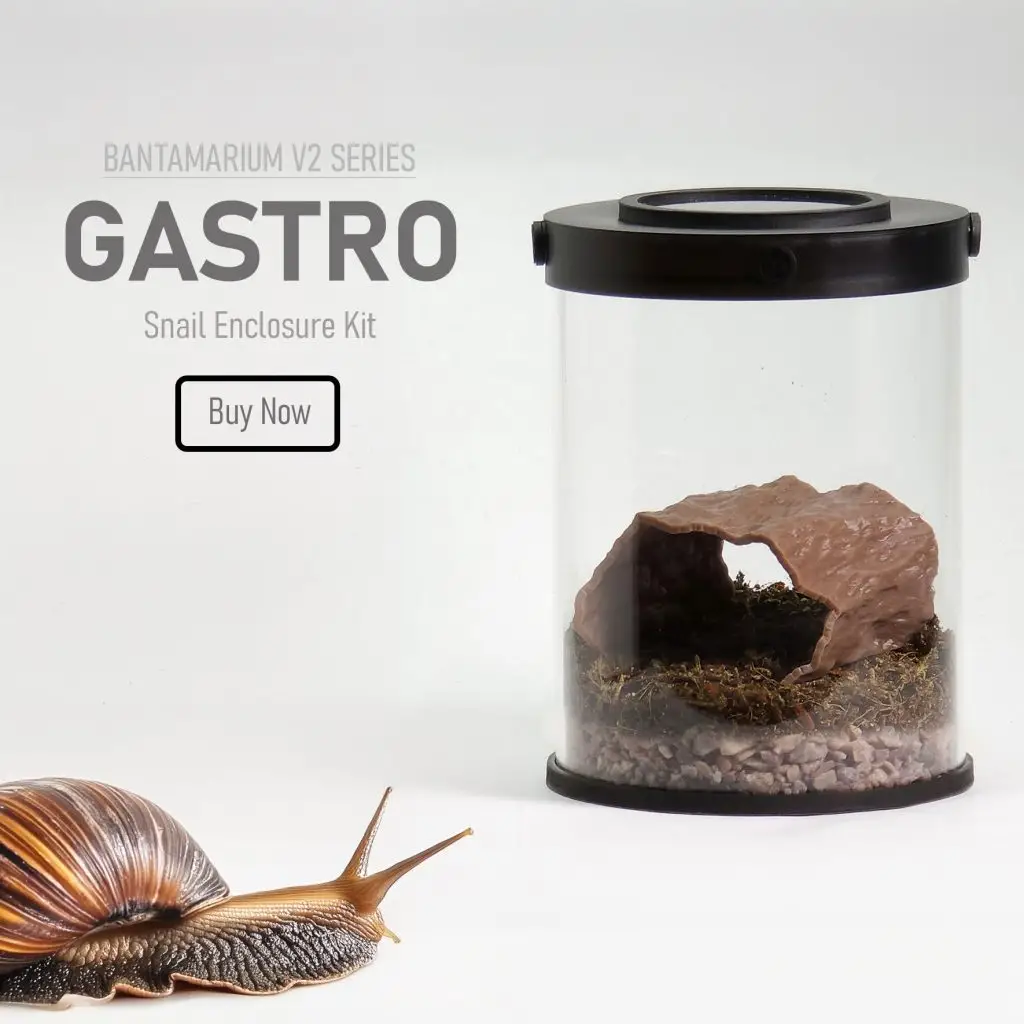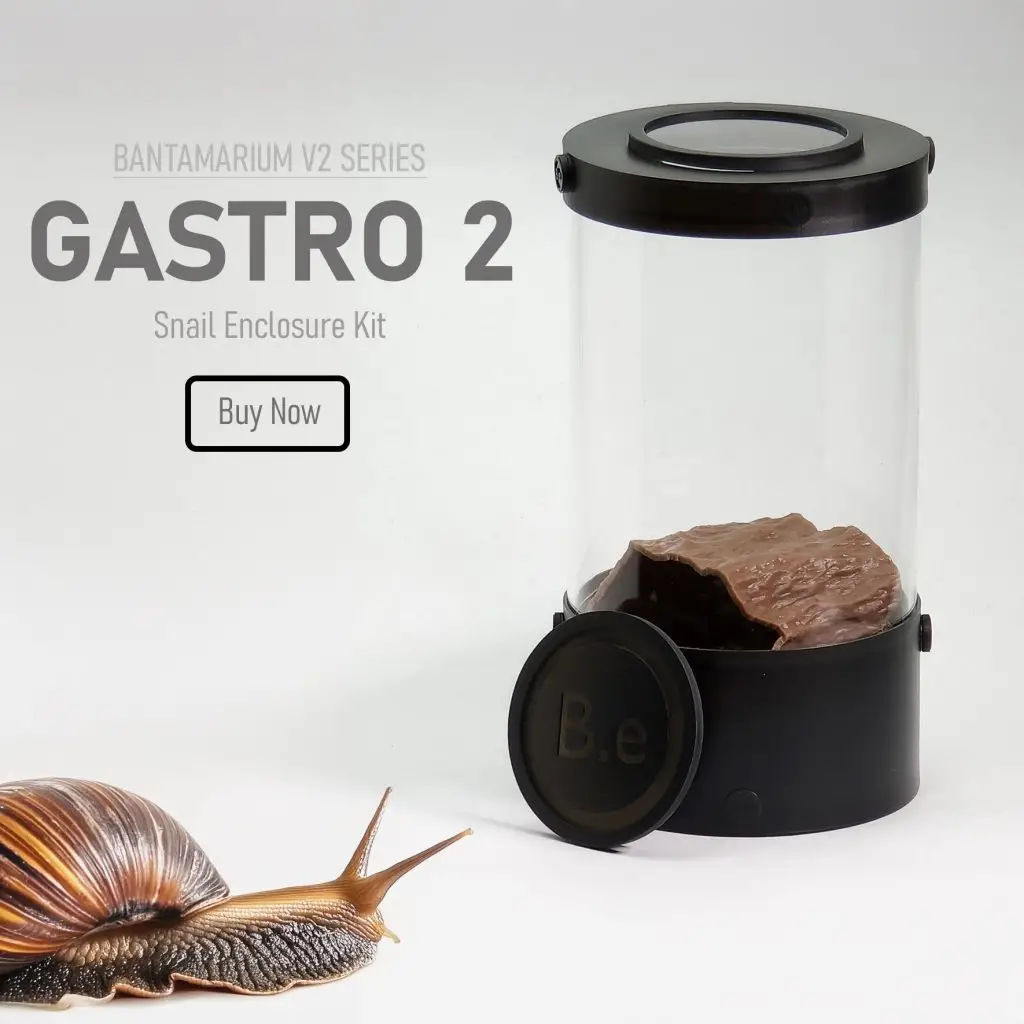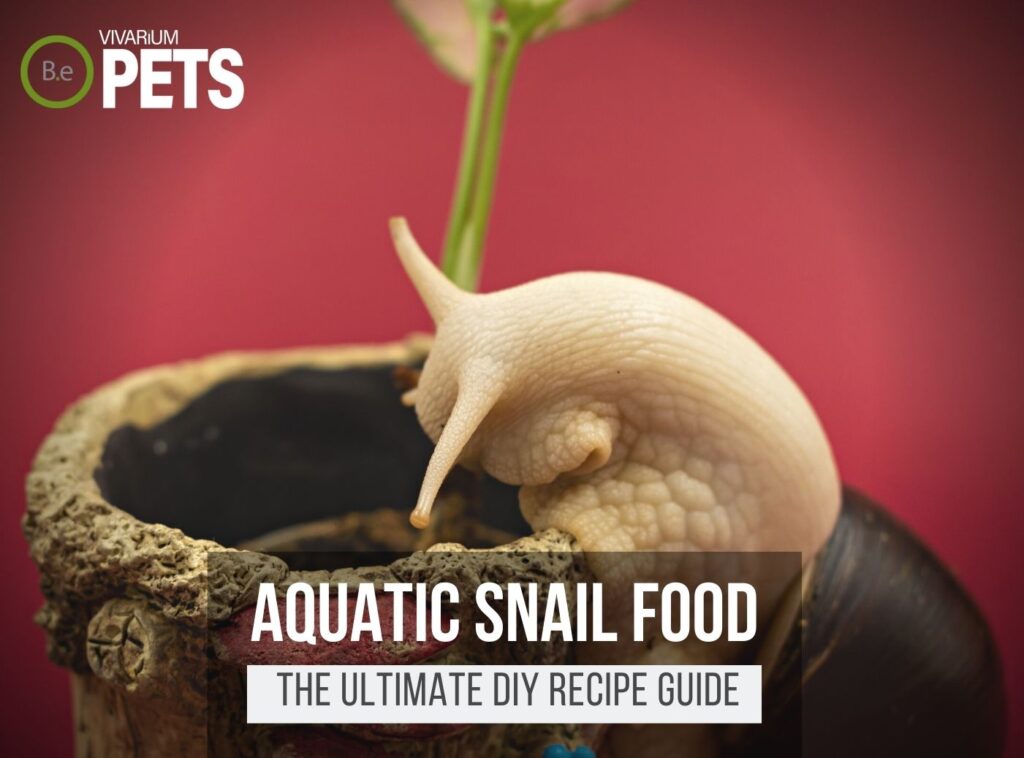Malaysian Trumpet Snails (Melanoides tuberculata) are easy to acquire and just as easy to care for. This makes them undoubtedly one of the most popular aquarium snails to have.
Despite their small size, they provide important benefits to the tank’s overall health.
If you’re considering adding Malaysian Trumpet Snails to your tank, keep reading to discover the necessary housing requirements, diet, and other facts and information you need to know to provide a healthy home for your snails.
Table Of Contents:
ToggleWhat Are Malaysian Trumpet Snails?
Malaysian Trumpet Snails are a species of freshwater snail belonging to the family Thiaridae.
Their scientific name is Melanoides tuberculata, but they are often also referred to as Red-rimmed Melania in many parts of the world.
They are native to southeast Asia, primarily found in Thailand and Malaysia. The name “trumpet” comes from the thin, cone-shaped shell the species has.
Create an ideal habitat for your pet snails with our Customizable Snail Enclosure Kits, which include everything you need to get started.
What Do Malaysian Trumpet Snails Look Like?
Malaysian Trumpet Snails grow to about 1.5 to 3 inches in length and 0.2 – 0.4 inches in width.
Their shells are semi-translucent, featuring a green to brownish color with a characteristic dark red or black ridge along the edge.
Their number of whorls, or spiral layers, ranges from two to four, and a deep suture divides each whorl.
Underneath the shell, there is a single pair of tentacles, a simple brain, and a muscular foot structure, which enables them to slowly swim around the tank.
Their tentacles are larger and have a thick, rubbery texture; they are used to help snails search for food and sense changes in the environment.
Their shells are predominantly smooth, with a thickening where the edge of the helix is evident.
Malaysian Trumpet Snails can be identified by their unique pattern of stripes and whorls that give the body a soft and attractive look.
Benefits Of Using Malaysian Trumpet Snails
Red-rimmed Melania can offer many benefits when added to vivariums.
These snails are excellent cleaners, consuming both composting debris and leftover food in the tank, and keeping the water clean for the other animals living in the tank.
In addition, Malaysian Trumpet Snails will aerate the aquatic substrate in the tank, promoting healthy bacterial activity and nutrient cycling.
As algae eaters, they can help keep algae growth under control, and they also provide a food source for other fish and aquatic animals.
Finally, they give your tank an aesthetically pleasing, natural look with their bright colors and attractive, spiral-shaped shells.


Malaysian Trumpet Snail Facts
Malaysian Trumpet Snails, or Red-rimmed melania, are peaceful, nocturnal scavengers native to tropical regions of the world.
They tend to feed on detritus and excess food, and their natural lifespan can exceed three years.
Breeding can occur in well-established aquariums, although the young may be difficult to spot due to their incredibly small size.
Habitat
Malaysian Trumpet Snails originated in Southeast Asia, and have also come to inhabit parts of North America.
In the wild, these snails thrive in slow-flowing streams, canals, and ponds, typically located in tropical regions with plenty of vegetation.
The snails hunt actively for food and are often found scavenging and grazing.
Malaysian Trumpet Snails are generally burrowing creatures, so plenty of soft substrate needs to be provided for them to dig and hide.
They will find areas with vegetation to feed off of, as well as rocks and driftwood in the tank, where they can search for food.
Diet
In the wild, Malaysian Trumpet Snails are scavengers and feed mostly on decomposing plant and animal matter.
They will readily consume debris found at the bottom of the tank or pond and help keep the substrate clean.
They are also known to feed on biofilm, algae, and even some of their species.
The snails will also consume other vegetation in small amounts, such as leaves, branches, and soft-bodied fruits and vegetables.
Temperament
Malaysian Trumpet Snails are peaceful, harmless critters that usually mind their own business.
They don’t interact with humans or other animals, and they’re not particularly aggressive.
They are very shy creatures, so they might retreat and hide when they detect the possibility of danger.
Although Red-rimmed Melania is typically quite timid, they may become more active and less shy in a tank with plenty of stable water conditions and a well-balanced diet.
Malaysian Trumpet Snails don’t interact much with other animals, either.
They are mostly solitary creatures, and males and females even live separately.
Even though they don’t particularly interact with other animals, Melanoides tuberculata and other creatures in the tank should all coexist peacefully as long as conditions in the tank are suitable and all animals are provided with enough resources.
Lifespan
Malaysian Trumpet Snails have a relatively long lifespan, typically between 2 to 3 years, depending on conditions.
They reproduce fairly quickly, maturing to breeding age in about 3 to 7 months, and can lay up to 10-20 live babies every 2-3 weeks.
Their life cycle begins with mating, and the females will produce eggs that hatch within the female before releasing the babies.
As the baby snails mature, they will begin to reproduce themselves, completing the cycle.
Breeding
Malaysian Trumpet Snails are asexual snails that mate and reproduce in pairs.
During mating, the female’s eggs are fertilized and stored inside a mucous-like substance within the female until they are ready to hatch.
Once the eggs have hatched, the female will release the newborns and the resulting young juveniles will feed on detritus, leftover foods, and algae to ensure they have adequate nutrition.
As they get older they will become more largely planktonic and feed on algae and dead matter.
Melanoides tuberculata may produce more offspring than most snail species, allowing populations to rapidly reproduce and increase in captivity.
Therefore, it is important to monitor snail populations within tanks and occasionally remove any excess snails to maintain balanced populations.
Where To Find Malaysian Trumpet Snails
Finding Malaysian Trumpet Snails for sale can be a bit of a challenge depending on the country you live as they are not as common as some other species of freshwater snails.
A good place to start is online stores or your local pet store; if they don’t have any in stock, they may be able to special order them.
Alternatively, you may be able to find Red-rimmed Melania in the wild.
As mentioned earlier, they are native to Southeast Asia and can be found in freshwater rivers and streams. they are relatively easy to spot when snorkeling or simply wading into the water.
Malaysian Trumpet Snail Care
When caring for Malaysian Trumpet Snails, owners should provide a clean aquarium environment with an abundance of well-aerated water, desired food sources, and minimal disturbances.
Keep their tank clean with regular water changes and provide a variety of food sources including blanched vegetables and sinking pellets.
Additionally, use caution when introducing them to other tank inhabitants to avoid predation.
Tank Requirements
To keep Red-rimmed Melania healthy and happy, they need an aquarium or riparium setup that meets their specific requirements.
The ideal tank should be set up for freshwater, with a pH of 7.5 to 8.5, hardness of 5 to 20 dKH, and a temperature of 65 to 85 degrees Fahrenheit.
Soft sand or sodium-free aquarium gravel substrate should be used, and the tank should be lightly lit by a full-spectrum LED bulb.
By providing their perfect environment, your Malaysian Trumpet Snails will thrive.
What Do Malaysian Trumpet Snails Eat?
Feeding Malaysian Trumpet Snails can be easy if you know what to look for.
They’re mostly detritivores, meaning they feed on organic material that may be found in the tank, such as decaying plants and fish waste.
The following items can be fed to Melanoides tuberculata to provide a complete diet:
- Algae
- Plant Matter (e.g., vegetable tablets, washed spinach leaves, etc.)
- Fish Food (e.g., pellets or flakes)
- Additional Calcium (e.g., cuttlebone)
It’s important to feed them frequently and in small amounts, so their excess waste doesn’t harm the tank’s water parameters.
Feeding your snails once or twice a day can suffice. You can also feed them frozen food, such as bloodworms or tubifex.
If your snails are not eating well, you may need to adjust the water parameters.
If you’re more of an avid hobbyist like myself, be sure to check out my ultimate DIY aquatic snail food guide. I give a more in-depth explanation of the best foods and my favorite recipe.
Best Tankmates For Malaysian Trumpet Snails
Malaysian Trumpet Snails are a hardy species that thrive in the company of similarly peaceful tankmates.
Good tankmates for Red-rimmed Melania include Silver Dollars, Buenos Aires Tetra, Angelfish, Neon Tetra, Platy, and Balloon Mollies.
Melanoides tuberculata should not be kept with aggressive species such as certain cichlids, crayfish, and bettas, who may pose a threat to the smaller snails.
Similar to Malaysian Trumpet Snails, nerite snails can also be good choices for tankmates.
They are extremely active, climb rocks, and consume algae and detritus just like Red-rimmed Melania.
They are also very peaceful and can make great tankmates as long as they are healthy and have compatible water parameters.
In addition to snails, shrimp can also be excellent tankmates for Malaysian Trumpet Snails.
A peaceful species of shrimp, such as ghost shrimp or amano shrimp, are good choices.
Ghost shrimp are excellent scavengers and will consume small amounts of algae.
The much larger Amano shrimp are also very peaceful and require a subtropical temperature of 72- 80 degrees Fahrenheit to survive.
Conclusion
By understanding the care needs of Malaysian Trumpet Snails and providing a healthy environment, you can enjoy the benefit of having them in your tank.
Adding Melanoides tuberculata can help maintain the delicate balance of a home aquarium, and with just a little bit of research and knowledge, you can create an ideal home for your pet snails.
Create the ideal habitat for your snails with our species-specific soil mixes and Insect Enclosure Kits. These products provide everything you need for a successful and thriving snail habitat.
Frequently Asked Questions
No, Malaysian trumpet snails are not typically considered pests.
They are beneficial for freshwater aquariums, as they help keep the substrate clean by consuming algae, decaying plant matter, and leftover fish food.
Yes, Malaysian trumpet snails are helpful creatures in freshwater aquariums as they feed on leftover fish food and decaying plant matter while they clean and aerate the sand.
They burrow into the substrate and mix up the sand and mulm, helping to oxygenate it.
Malaysian trumpet snails are not known to actively hunt and eat other snails, but they may accidentally consume small snails or their eggs while feeding on detritus or algae.
Malaysian trumpet snails are unlikely to be able to climb out of the tank, as their bodies are relatively short and they are poor climbers.
The best way to keep them in their tanks is to make sure there are no gaps or openings large enough for them to escape through.
Malaysian trumpet snails typically range in size from 1/4 inch to 2 inches in length, with females generally being larger than males.
However, their size can vary depending on environmental factors such as food availability and tank conditions.
Yes, Malaysian trumpet snails are beneficial in a fish tank as they help keep the substrate clean by consuming algae and decaying plant matter, as well as leftover fish food.
They also help to aerate the sand and mulm, keeping it oxygenated.
Most fish will not consume Malaysian trumpet snails, as they are relatively large and their shells are too hard to crack open.
Fish that may occasionally scavenge these snails include pufferfish and some cichlids.
Red-rimmed Melania, also known as Melanoides tuberculata, originates from freshwater rivers, streams, and ponds in Nothern Africa and Southeast Asia.
Particularly in Indonesia, Malaysia, and Thailand. It is a widely distributed species and is also considered a popular species in the aquarium trade due to its ability to help maintain water quality.
Red-rimmed Melania (Melanoides tuberculata) is not known to be poisonous to humans.
However, it is important to handle any aquatic creatures with care and to wash hands thoroughly after handling them to prevent any potential infections or illnesses.
Additionally, it is not recommended to consume any aquatic animals that have not been properly and safely prepared for human consumption.






